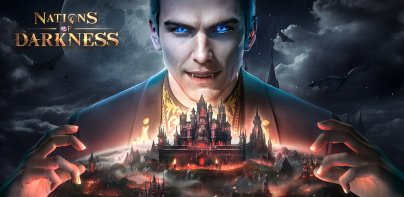


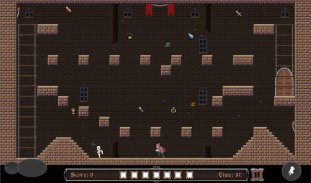
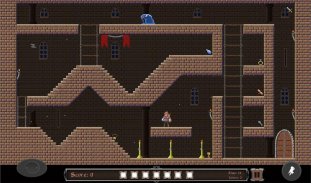
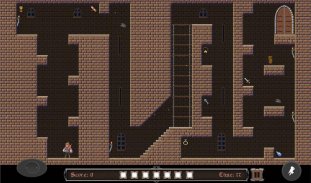
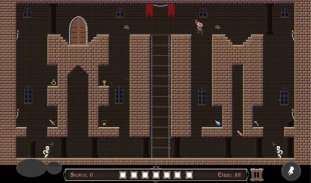
Sir Lancelot Quest

Perihal Sir Lancelot Quest
Sir Lancelot Quest is a platform game inspired by the game published in the 80s for amstrad CPC and ZX spectrum home computers, but with graphics and updated content, with an air pixel art, which gives it those retro times.
The player will control Sir Lancelot, who must explore the 24 rooms of the castle, and collect all the objects in each room to open the door, and exit to the next room. Your task will be hampered by the presence of enemies and think how to perform the movements with stairs only rise, and placement of the elements. The dynamics of the enemies, screens and situation of the objects, follows the patterns of the original game released for amstrad CPC and ZX spectrum. You also have a time to complete each room, if this time runs out, depending on the game mode, you will lose the game and you must start the room from the beginning.
The game consists of two game modes:
- The story mode that follows the patterns of mobile games, avoiding the way to play retro, where you can repeat as many times as you want each level, and you will open the next ones as you complete the previous one.
- The survival mode, has all the retro character of the game, where we will have 3 lives, and advance through the screens sequentially, as was the case in the original version of ZX spectrum. When you lose all three lives, you must start from the first screen.
The control of the game is simple, there are only the three operations of the retro game of amstrad CPC and ZX spectrum, moving the character to the right or left, and being able to jump.
In the survival mode, the rooms are visited as in the ZX spectrum version, progressively, while the story has it as the amstrad CPC verison, which allows the rooms to be completed in order but can be repeated. Also in the survival mode, to give it the most retro character, it consists, as in amstrad CPC, of a higher score.
Enjoy, remembering your games to this magical version, one of the greatest hits of the 80s for personal computers.
Sir Lancelot Quest adalah permainan platform yang diilhamkan oleh permainan yang diterbitkan pada tahun 80-an untuk komputer rumah spektrum CPC dan ZX, tetapi dengan grafik dan kandungan yang dikemas kini, dengan seni piksel udara, yang memberikannya masa retro.
Pemain akan mengawal Sir Lancelot, yang mesti meneroka 24 bilik istana, dan mengumpulkan semua objek di setiap bilik untuk membuka pintu, dan keluar ke bilik sebelah. Tugas anda akan terhalang oleh kehadiran musuh dan berfikir bagaimana untuk melakukan gerakan dengan tangga sahaja naik, dan penempatan unsur-unsur. Dinamika musuh, skrin dan keadaan objek, mengikuti corak permainan asal yang dikeluarkan untuk spektrum Amstrad dan spektrum ZX. Anda juga mempunyai masa untuk menyelesaikan setiap bilik, jika masa ini habis, bergantung kepada mod permainan, anda akan kehilangan permainan dan anda mesti memulakan bilik dari awal.
Permainan ini terdiri daripada dua mod permainan:
- Mod cerita yang mengikuti corak permainan mudah alih, mengelakkan cara bermain retro, di mana anda boleh mengulangi sebanyak yang anda mahu setiap peringkat, dan anda akan membuka yang seterusnya apabila anda melengkapkan yang sebelumnya.
- Mod kelangsungan hidup, mempunyai semua watak retro permainan, di mana kita akan mempunyai 3 nyawa, dan maju melalui skrin secara berurutan, seperti yang berlaku dalam versi asal spektrum ZX. Apabila anda kehilangan ketiga-tiga nyawa, anda mesti bermula dari skrin pertama.
Kawalan permainan ini mudah, hanya terdapat tiga operasi permainan retro bpk amstrad dan spektrum ZX, menggerakkan watak ke kanan atau kiri, dan dapat melompat.
Dalam mod kelangsungan hidup, bilik-bilik telah dikunjungi seperti dalam versi spektrum ZX, secara progresif, sementara kisahnya memilikinya sebagai verizon CPC amstrad, yang membenarkan bilik-bilik disiapkan dengan teratur tetapi boleh diulang. Juga dalam mod kelangsungan hidup, untuk memberikan watak yang paling retro, ia terdiri, seperti dalam CPC amstrad, skor yang lebih tinggi.
Nikmati, ingat permainan anda untuk versi ajaib ini, salah satu hits terbesar pada tahun 80-an untuk komputer peribadi.





